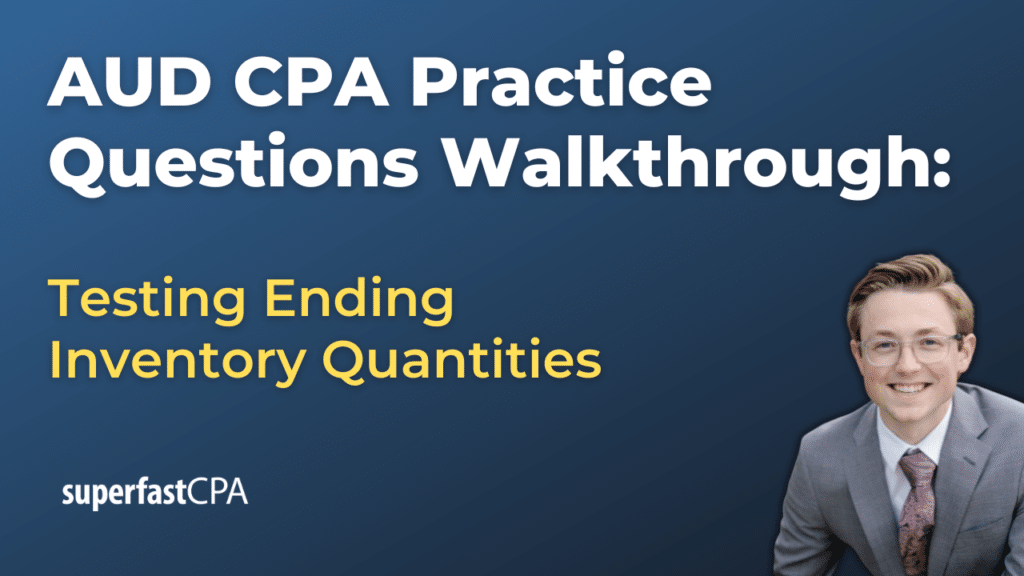In this video, we walk through 5 AUD practice questions teaching about testing ending inventory quantities. These questions are from AUD content area 3 on the AICPA CPA exam blueprints: Performing Further Procedures and Obtaining Evidence
The best way to use this video is to pause each time we get to a new question in the video, and then make your own attempt at the question before watching us go through it.
Also be sure to watch one of our free webinars on the 6 “key ingredients” to an extremely effective & efficient CPA study process here…
Testing Ending Inventory Quantities
When auditing a company’s inventory, it’s not enough to rely on reported numbers. Auditors must gather evidence that inventory quantities exist, are in good condition, and are accurately reflected in the company’s records. This is especially important when inventory is material to the financial statements. Below are key concepts and examples to illustrate how this is done.
Tracing for Existence
To test the existence of inventory, auditors trace from the inventory schedule or accounting records to physical evidence such as inventory tags or count sheets.
Example: An auditor selects an item listed in the company’s inventory records and locates it in the warehouse using the inventory tag. This confirms that the recorded item is physically present.
Observation vs. Confirmation
If inventory is held by the company and is significant, auditors usually observe the physical count. For inventory held by third parties, auditors can use confirmation procedures instead.
Example: A company stores most inventory in its warehouse but has some products held by a distributor. The auditor should observe the count at the warehouse and send a confirmation request to the third party to verify the consignment inventory.
Year-End Counts
The timing of the inventory count matters. If the client has a reliable perpetual inventory system, an interim count may be acceptable. If not, the auditor may require a count at year-end.
Example: If a company’s inventory system is known to be inaccurate or poorly maintained, the auditor will likely request a physical count at the end of the reporting period to ensure the balance is correct as of that date.
Turnover Analysis
Auditors use analytical procedures like inventory turnover ratios to evaluate the condition of inventory. A decline in turnover could signal slow-moving or obsolete items that may require a valuation adjustment.
Example: If a company’s turnover for certain electronics drops significantly from the prior year, the auditor may investigate whether those items are outdated or unsellable, which could require a write-down.
Resolving Discrepancies
When differences arise between physical counts and recorded amounts, auditors must investigate the reason and obtain evidence to support the client’s explanation.
Example 1: The auditor counts 150 units in the warehouse, but the client’s records show 100. The warehouse manager explains that 50 more units were received yesterday but not yet recorded. The auditor should verify this with the receiving report and vendor invoice.
Example 2: The client includes goods in its inventory that were shipped FOB shipping point but are still on site. Since ownership transfers at the shipping point, these goods should not be included. The auditor would review the shipping terms and documentation to determine whether the inventory is overstated.
Conclusion
Auditing inventory involves more than just looking at numbers—it requires careful testing of existence, condition, and record accuracy. Observing counts, confirming third-party holdings, analyzing turnover, and resolving discrepancies all contribute to reliable audit evidence. These procedures help ensure the ending inventory reported in the financial statements truly reflects what the company owns and has on hand.














